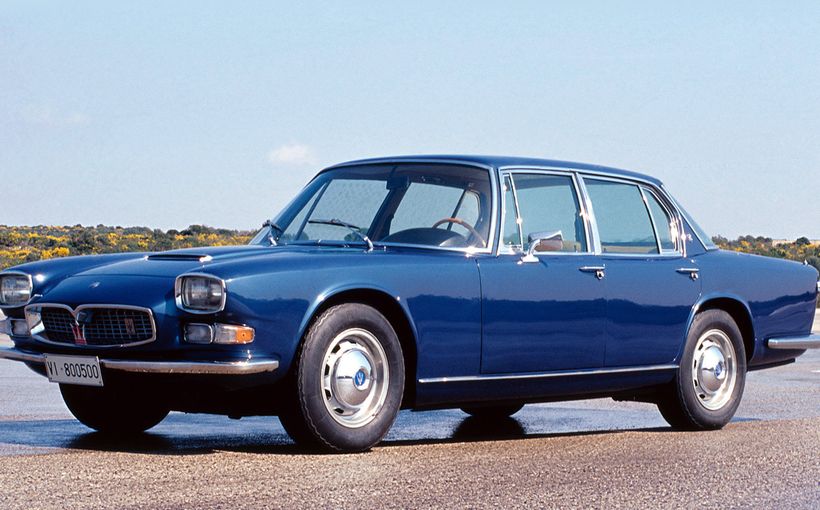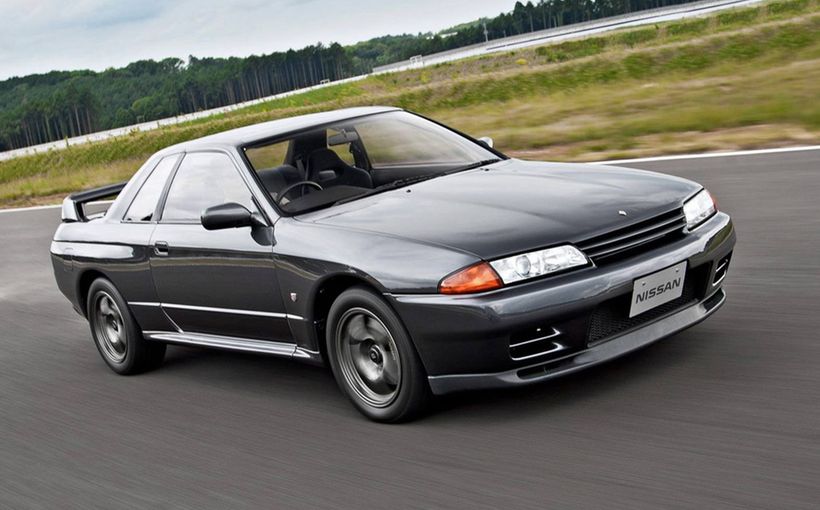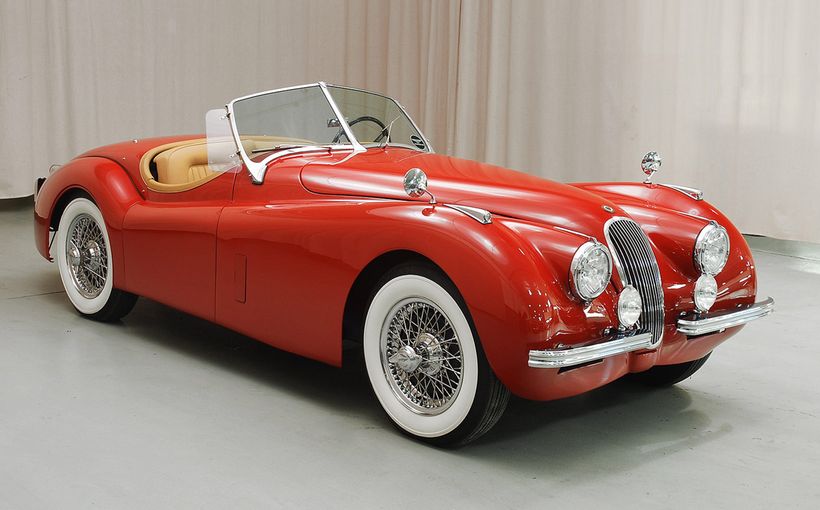MGA and MGB: tradition survives in spite of BMC rule

When I was a child in the 1950s, the term ‘sports car’ almost invariably applied to convertibles, although an honourable exception was the sublime Mercedes-Benz 300SL ‘Gullwing’ coupe. An MG TC was a sports car, so was a Jaguar XK120. Usually there were just two seats and side curtains were fitted instead of wind-up windows. Mostly, the soft tops leaked, the ride was bone-jarring and there was a spartan feeling to the whole wind-in-the-hair ethos.
But gradually this association of convertibility with ‘sports cars’ was eroded. The whole definition of what constituted high performance motoring began to shift. By the early to mid-1960s the GT or Grand Tourer came to prominence.
When the MGA went into production in 1956, my boyhood idea of the sports car continued to flourish, but the questions were starting. The makeshift convertible roof that might have worked OK at speeds of up to 60 miles per hour or so was less satisfactory at 70 or 80. The MGA’s square-rigged TC, TD and TF Midget predecessors were flat out at 80 – or, in the case of the 1954 TF 1500, maybe 85 – but the sleek new car could reach 95. Aerodynamics were not a strong point of convertibles. When MG introduced the MGA coupe with glass side windows, top speed leapt to 102. A factory detachable hardtop had been available from the start of the model run and this was especially popular with rally competitors.
Enthusiasts who had loved the MGs of the pre-war and early postwar years had some misgivings about the direction in which the Abingdon company seemed to be heading. The corporate demands of new owner BMC meant that the MGA had to use an Austin engine, the 1489cc B-Series unit that also powered assorted lacklustre sedans, albeit in a higher state of tune. The Nuffield Group (Morris and Wolseley) took over MG in 1935 and in 1952 Nuffield merged with Austin to form the British Motor Corporation (BMC).

While MG management wanted to replace the TD with a new sports car, head office said no and the result was the half-hearted TF.
As early as the 1953 London Motor Show, it was obvious to MG enthusiasts that all was not as it had been at Abingdon. MG historian F. Wilson McComb writes in his classic text MG by McComb:
So the new TF was accompanied at the 1953 Motor Show by the new ZA Magnette saloon. M.G. [M stop G stop for Morris Garages] fans could scarcely decide which aspect of this situation offended them most: the fact that an obvious Wolseley was being presented as an M.G.; that the sacred name of Magnette should be revived for a saloon (quite forgetting that the first Magnettes of all had been saloons); that a closed M.G. should be given a 1 ½-litre engine when the sports car, which so urgently needed one, still had to make do with a 1 ¼-litre. The correspondence columns of the motor magazines were filled for quite a few weeks after the doors closed at Earls Court.

Re the Magnette: the brilliant designer of the 1949 Jowett Javelin, Gerald Palmer, had been head-hunted by BMC. He had designed a sedan intended as an MG and to be powered with the XPAG 1.25-litre engine. But it was then decided to introduce this car as the Wolseley 4/44 at the 1952 Motor Show. Even Palmer didn’t know until quite late in the day that the Magnette version was to be given a 1.5-litre Austin B-Series engine. (That must have rankled aficionados, too, that the Magnette had an Austin engine!)

The fact that the ZA Magnette with 60 brake horsepower was actually a very fine sports sedan somehow got overlooked in all this kerfuffle and it proved very popular to a broader audience. Meanwhile, the TF 1500 would be ready for release the following year with a new 1466cc XPEG engine making 63bhp.
But the question was being asked: what constitutes a modern MG? The TF was hopelessly outdated even at launch, competing with cars such as the Triumph TR2 and the dearer Austin Healey with faired-in guards and a lower stance. It was precisely because BMC had the Healey that MG was not given permission to develop a new sports car to compete with it.
MG management was keen to use motorsport to promote its new models and BMC had approved the establishment of a competitions department to help the entire corporation. This was set up within the MG factory.
Meanwhile, MG’s designers, tasked with designing an all-new modern car after a succession of Midgets since 1936, had developed a sleek successor to the TF. It was to have been launched at the start of June 1955. Three cars would then compete at Le Mans, with a view to fuelling demand. But a delay in the arrival of the new bodies saw a change of plan, which probably worked in the MGA’s favour. Just a week or two before the big race, the car was publicly unveiled as the racing prototype EX.182 with aluminium bodywork and the 1489cc engine.
By this stage, the ZA Magnette had proved handy in sedan racing. Its popularity meant Abingdon built six sedans for every TF.

With EX.182, MG returned to the racetrack with a works team after an absence of 20 years. Two of the three completed the 24 Hours of Le Mans, finishing fifth and sixth in their class behind three rapid Porsches (the quickest finishing fourth outright) and an Osca.
The production MGA, despite its use of a steel body, looked for all the world like the car being referred to as the ‘Le Mans MG’ and was an immediate success. In its first full year of production (1956), more than 13,000 were built, many more than the total of TCs over four years of production!

There is an interesting story behind the choice of name. MG’s cute little postwar sedan was the Y-Type (powered by the XPAG engine). The Magnettes were ZA and ZB (before the execrable Farina-bodied Mark III and Mark IV models, which were not even built at Abingdon). So for its sports car to replace the TF, a decision was taken to go back to the beginning of the alphabet again. But whatever management decided to call it, the MGA was always going to sell well with its lovely appearance, strong performance and eminently forgiving handling.
Suddenly all the fuss about the demise of traditional square-rigger bodies evaporated. The sight of the ‘experimental’ MGs racing against their 1950s contemporaries with faired-in mudguards and a lower centre of gravity worked wonders.
The production MGA, unlike the racers, had a full-width windscreen. It had a real boot instead of a cavity crammed with a huge fuel tank.
Despite its elegant new appearance, the MGA arguably had more in common with its TF predecessor than its MGB successor. Like every MG until the Magnette, the MGA was built on a separate chassis. It had drum brakes all round. By contrast, the Bee was a monocoque and even included – quelle horreur for the purists – wind-up windows, internal door handles and other sedan-like accoutrements. It had front disc brakes.
The MGA produced 68 brake horsepower at 5500 rpm, which was a higher state of tune than the ZA Magnette (60 at 4600). But the ZB (October 1956) featured a 68.4 horsepower version of the B-Series unit. By this time the MGA’s engine made 72bhp.
Most UK and overseas journalists commented on the MGA’s competition background. Its performance was praised. Even as late as 1956, a true top speed approaching 100 miles per hour was considered seriously fast, especially in such a relatively inexpensive motor car.

Of course, MG had more in store. In July 1958 the company announced the MGA Twin Cam. This version was equipped with disc brakes front and rear. It also had centre-lock disc wheels like those fitted to the Jaguar D-Type. The Twin Cam represented more of a forward step in performance over the standard MGA than that car had represented over the TF 1500. It accelerated from zero to 60 miles per hour in nine seconds and could reach 115 flat out.

Sadly, the Twin Cam soon became one of the sad motoring stories of the 1950s. To achieve its 108 brake horsepower, the engine had been bored out to 1588cc and given a 9.9:1 compression ratio. It really needed 100-octane fuel, which was difficult to find in the UK or, say, Australia. (What were the engineers thinking?) The fuel mixture and ignition timing had to be spot on. It could be easily over-revved in the indirect gears.

Here was a highly specialised car which needed a sympathetic owner but which was, of course, generally available to anyone who could assemble the necessary cash. Many engines were destroyed and MG took the Twin Cam out of production before the company’s reputation, too, was destroyed, especially in its biggest market, the US. In April 1960 the last of 2111 Twin Cams went down the line.
Very few Twin Cams came to Australia, but the standard MGA was a common sight. In 1959 an MGA cost £1376, while one of the last ZB Magnettes was £1577. The Austin-Healey Sprite (‘Bugeye’) was the sports car bargain at £1175, just £2 more than a Holden FC Special. The last of the MGA 1600 Mark IIs (£1313) was surprisingly close in both price and performance (albeit with an extra 10 miles per hour top speed) to the new Fiat 1500 sedan (£1295).
The Twin Cam, despite its failings, made a tremendously positive impression. In terms of performance, the model overshadowed the new MGB.
I remember first reading about the Bee in late 1962 and thinking that it was an anti-climax after the Twin Cam. I thought even as a 12-year-old boy that the MGB didn’t seem to be as excitingly fast as you would expect for the day. Of course, it was also dramatically overshadowed by the E-Type Jaguar of the previous year with its fabled 150 miles per hour top speed?
It is important to understand though that when this car was being developed, the plan was never that it should continue in production for almost two decades; it was to be replaced in 1970. A further point is that when the Australian motoring magazines reviewed the MGB, the Chrysler Valiant had already been on sale for more than half a year; an MGA would have left any standard grey-engined Holden for dead but an MGB only had a slight edge on acceleration over a Valiant, albeit with a higher top speed.

In 1959 the MGA was given a 1588cc engine (like the Twin Cam but still with overhead valves) and front disc brakes. It was renamed the MGA 1600. A facelift followed in 1961, the highlight (or lowlight) of which was a fussier grille. But the engine received a major rework and increased in size to 1622cc. This 1600 Mark II delivered 93 brake horsepower. One hundred miles per hour was readily achievable.
The Twin Cam, despite its failings, made a tremendously positive impression. In terms of performance, the model overshadowed the new MGB.
I remember first reading about the Bee in late 1962 and thinking that it was an anti-climax after the Twin Cam. I thought even as a 12-year-old boy that the MGB didn’t seem to be as excitingly fast as you would expect for the day. Of course, it was also dramatically overshadowed by the E-Type Jaguar of the previous year with its fabled 150 miles per hour top speed?
It is important to understand though that when this car was being developed, the plan was never that it should continue in production for almost two decades; it was to be replaced in 1970. A further point is that when the Australian motoring magazines reviewed the MGB, the Chrysler Valiant had already been on sale for more than half a year; an MGA would have left any standard grey-engined Holden for dead but an MGB only had a slight edge on acceleration over a Valiant, albeit with a higher top speed.
With hindsight, the MGA can be seen as a transitional sports car. By 1960, says McComb:
…the sports car market had gradually altered to a very considerable extent. There had been a time when the sports car enthusiast gladly accepted inconveniences of one sort or another – limited space for passengers or luggage, a harsh and uncomfortable ride, poor wet-weather protection, a noisy and probably rather thirsty engine which might demand frequent attention to keep it in tune, the necessity for a fair degree of driving skill – in exchange for a performance well above that of the ordinary saloon. Once the saloon started to catch up with the sports car in performance, it was inevitable that fewer buyers would put up with inconvenience in order to run a sports car. And sports cars had To be made less uninhabitable in any case when their performance reached the stage where people were cruising at 90 instead of 60mph.

Although in many respects the MGB represented a development of the MGA with the more volume-efficient unitary construction, it did meet virtually every criticism that had been made of its predecessor. There was much more room for passengers and a bigger boot. Visibility was greatly improved. The gauges were placed in front of the driver in an elegant display. There was an attractive crackle-black metal fascia. The seats were adjustable for rake and much more comfortable. Somewhat strangely for a new 1960s design, there was still no synchromesh on first gear and old-fashioned lever-style dampers were retained.
For a while, the engineers believed they were going have to make do with the outgoing MGA 1600 Mark II’s 1622cc engine for the heavier MGB, but the Austin 1800 – still years from release – was to receive a larger 1798cc version of the B-Series unit and this was used in the MGB first. Maximum power was 95 horsepower, just two more than the last of the MGAs, but there was far more torque. Zero to 60 miles per hour took 12.2 seconds, which was a few tenths quicker than its predecessor.

The MGB was received with delight by the world’s motoring journalists. It sold very well in the US and even the advent of the Mustang did not bring a reversal in the Bee’s fortunes. With its crisp handling and rorty engine, the MGB was to the American motoring enthusiast pretty much what the TC had been in the immediate aftermath of World War Two when many GIs shipped these little sports cars home with them from Europe.
Locally, the MGB occupied the same market niche as its predecessor. In the New Car Prices section of the March 1965 edition of Wheels, when the HD Holden was the cover story, it is listed at £1395, making it a little less expensive than a new Premier.

The MGB’s engine still used just three main bearings until 1965. A five-bearing design had been developed for the Austin 1800 and was fitted to the MGB after the 1964 London Motor Show. Some road tests reported a slight downturn in performance with less appetite for high rpm.

John Thornley, who became MG’s general manager in 1952, had long nurtured the dream of creating what he called a ‘poor man’s Aston Martin’. He achieved this with the 1965 MGB GT, a car which reflected the changing market for sports cars and the coming of GTs. Despite being 100kg heavier than the roadster, its superior aerodynamics gave it an equal top speed and, once beyond about 70mph, the same acceleration. With its fold-down rear seat (which offered accommodation for two very small children) and big hatchback, the GT was highly practical and lost none of the roadster’s verve.
When given its full name, the MG MGB GT displayed a certain alphabetical flamboyance!

In late 1967 the MGB Mark II arrived with synchromesh on first gear for the first time and an automatic transmission option. It also had an alternator instead of a dynamo. A 1969 facelift with new grille detracted from the purity of the design. But blessedly the rubber-bumper models destined for the US were never sold new in Australia.
In summary, the MGA and MGB are highly desirable traditional sports cars that make great usable classics and remind us of a simpler, perhaps more enjoyable motoring past.










